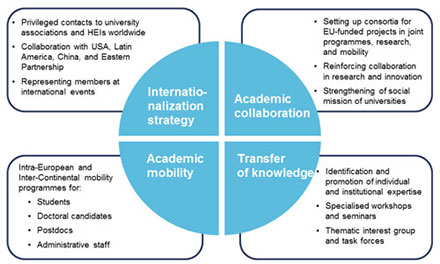
Universidade
do Porto (UP)
Coordination: Prof. Fátima Marinho
Management: Ana Reis
Copyright © 2025 ― All rights reserved.
Design: Giovanni Tagliaro
Implementation: Jorge Santos
Graphic Editing: Pedro Silveira
This project has been funded with support from the European Commission. This communication reflects the views only of the author, and the Commission cannot be held responsible for any use which may be made of the information contained therein.

Universidade Federal do Rio
Grande do Sul (UFRGS)
Coordination: Prof. Nicolas Maillard
Management: Lizângela Guerra


























































































































































 We would like to present to our EBW+ partners an associate institution in our project - the SGroup European Universities’ Network, a non-for profit association comprising over 30 universities from 15 European countries. The SGroup’s members represent HEIs of strong international reputation in Europe and worldwide, for instance 13 SGroup members are ranked among world’s best in the Shanghai Ranking 2016. The comradery and trust among its SGroup members brought together also five of the SGroup members to form the EBW+ consortium: University of Porto, University of Malta, Sapienza University of Rome, University of Rouen, and the Polytechnic University of Valencia.
We would like to present to our EBW+ partners an associate institution in our project - the SGroup European Universities’ Network, a non-for profit association comprising over 30 universities from 15 European countries. The SGroup’s members represent HEIs of strong international reputation in Europe and worldwide, for instance 13 SGroup members are ranked among world’s best in the Shanghai Ranking 2016. The comradery and trust among its SGroup members brought together also five of the SGroup members to form the EBW+ consortium: University of Porto, University of Malta, Sapienza University of Rome, University of Rouen, and the Polytechnic University of Valencia. 

